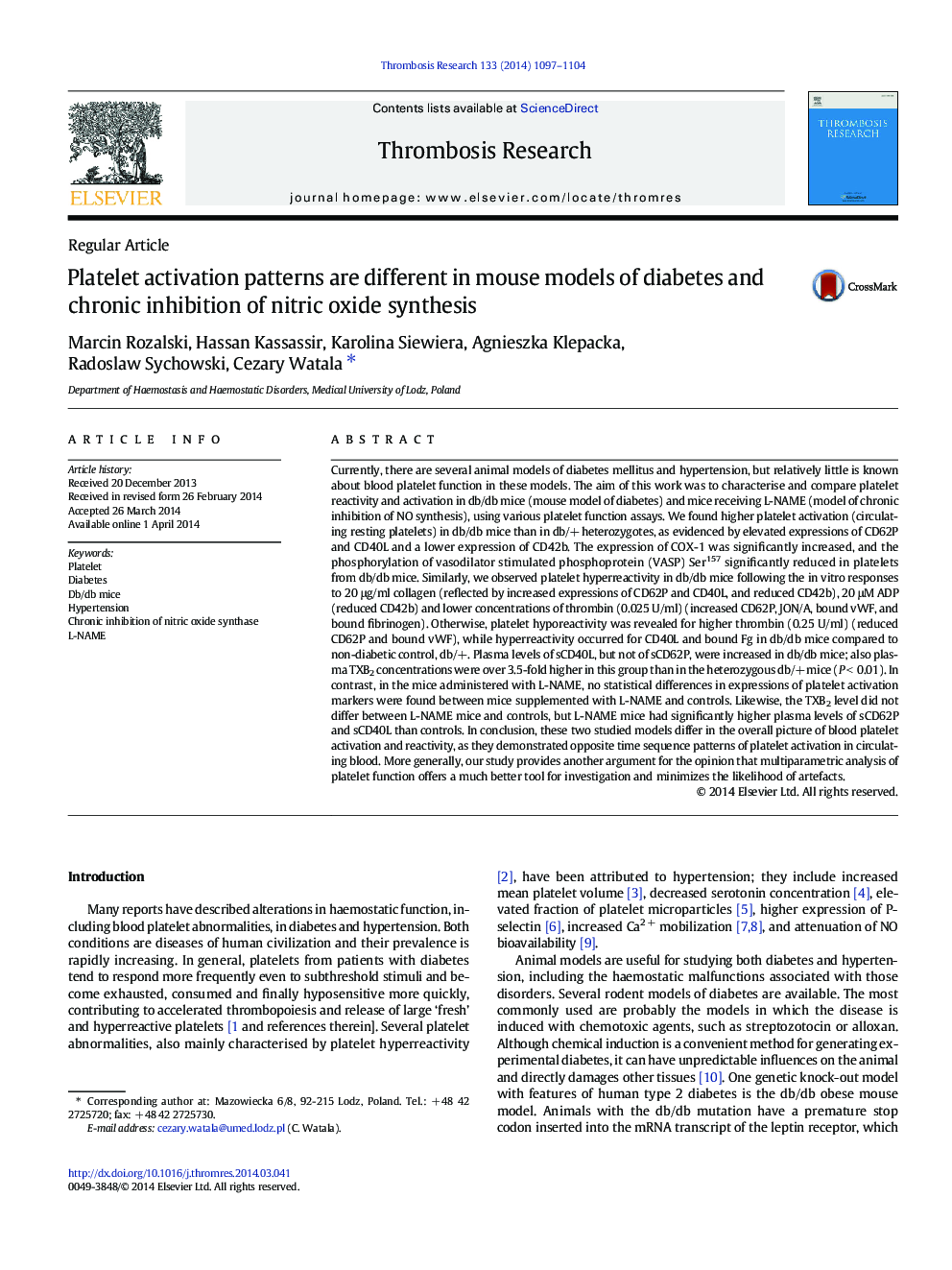| Article ID | Journal | Published Year | Pages | File Type |
|---|---|---|---|---|
| 6002504 | Thrombosis Research | 2014 | 8 Pages |
Currently, there are several animal models of diabetes mellitus and hypertension, but relatively little is known about blood platelet function in these models. The aim of this work was to characterise and compare platelet reactivity and activation in db/db mice (mouse model of diabetes) and mice receiving L-NAME (model of chronic inhibition of NO synthesis), using various platelet function assays. We found higher platelet activation (circulating resting platelets) in db/db mice than in db/+ heterozygotes, as evidenced by elevated expressions of CD62P and CD40L and a lower expression of CD42b. The expression of COX-1 was significantly increased, and the phosphorylation of vasodilator stimulated phosphoprotein (VASP) Ser157 significantly reduced in platelets from db/db mice. Similarly, we observed platelet hyperreactivity in db/db mice following the in vitro responses to 20 μg/ml collagen (reflected by increased expressions of CD62P and CD40L, and reduced CD42b), 20 μM ADP (reduced CD42b) and lower concentrations of thrombin (0.025 U/ml) (increased CD62P, JON/A, bound vWF, and bound fibrinogen). Otherwise, platelet hyporeactivity was revealed for higher thrombin (0.25 U/ml) (reduced CD62P and bound vWF), while hyperreactivity occurred for CD40L and bound Fg in db/db mice compared to non-diabetic control, db/+. Plasma levels of sCD40L, but not of sCD62P, were increased in db/db mice; also plasma TXB2 concentrations were over 3.5-fold higher in this group than in the heterozygous db/+ mice (P < 0.01). In contrast, in the mice administered with L-NAME, no statistical differences in expressions of platelet activation markers were found between mice supplemented with L-NAME and controls. Likewise, the TXB2 level did not differ between L-NAME mice and controls, but L-NAME mice had significantly higher plasma levels of sCD62P and sCD40L than controls. In conclusion, these two studied models differ in the overall picture of blood platelet activation and reactivity, as they demonstrated opposite time sequence patterns of platelet activation in circulating blood. More generally, our study provides another argument for the opinion that multiparametric analysis of platelet function offers a much better tool for investigation and minimizes the likelihood of artefacts.
